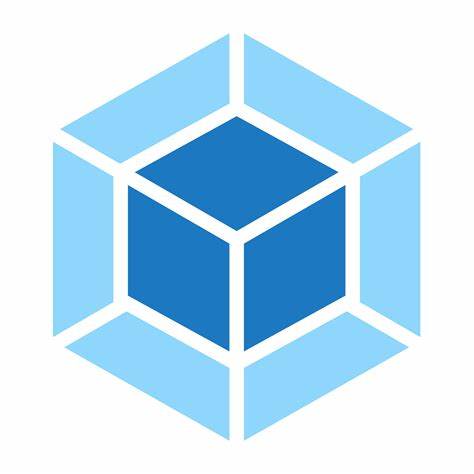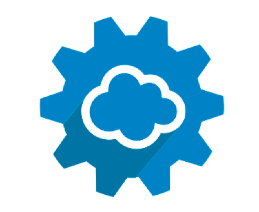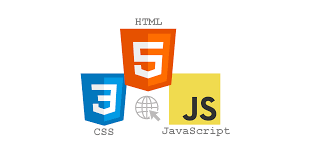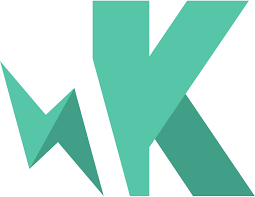
Jaichand Khatik
Staff engineer with 8.8 years of experience specializing in JavaScript, TypeScript, React and React Native; led a team of developers to launch Infra.Market's first app for the Sales team, resulting in improved sales efficiency; promoted twice within three years due to exceptional project management skills that delivered projects with a 45% improvement in timelines. Career goal: to leverage technical skills to drive innovation and efficiency in software development.
- Role
Front End Developer
- Years of Experience
8 years
- Professional Portfolio
View here
Skillsets
- CSS3 - 9 Years
- SCSS - 5 Years
- Github - 3 Years
- REST API - 9 Years
- Git - 8 Years
- APIS - 8 Years
- Node Js - 2 Years
- RTL
- RTK
- vite
- Unit Testing
- Type Script - 7 Years
- Jest - 4 Years
- HTML5
- Enzyme
- Redux - 5 Years
- RESTful API - 7 Years
- Angular - 4 Years
- Technical application architecture
- Responsive application design
- Tailwind CSS
- React Js
- HTML - 9 Years
- CSS - 9 Years
- react - 3 Years
- Node Js - 2 Years
- React Js - 5 Years
- JavaScript - 8 Years
- Type Script - 2 Years
- React Native - 5 Years
Vetted For
- Roles & Skills
- Results
- Details
- Technical LeadAI Screening
- 63%
- Skills assessed :Node Js, Type Script, Jest, Cloud Services, APIS, Git, Jenkins, Java, Spring Boot, Python, third party APIs, payment systems
- Score: 57/90
Professional Summary
- Apr, 2024 - Present1 yr 6 months
Staff Engineer
Cloudwick technology - Mar, 2020 - Apr, 20244 yr 1 month
Senior Software Engineer II
infra.Market - Aug, 2018 - May, 20201 yr 9 months
Senior Software Engineer 1
HashedIn Technology - Feb, 2016 - Mar, 20182 yr 1 month
Software Engineer
Access Designs Solutions - Mar, 2018 - Aug, 2018 5 months
Software Engineer
Fintellix Solutions
Applications & Tools Known

Webpack

React
Jira

jQuery

Git

MongoDB

REST API
Figma

SaaS
NPM

Postman

tailwind css

React Native

Javascript

TypeScript

HTML, CSS and JavaScript

Jasmine

Karma
Work History
Staff Engineer
Cloudwick technologyOptimized team's component testing process by 35% through the establishment of a storybook and refinement of existing library.
Coordinated efforts among developers and testers on comprehensive review sessions that identified gaps in existing
coverage; findings led initiatives targeting four major system components for immediate enhancement.
Delivered sprints with a 45% improvement in time, showcasing exceptional project management and team collaboration skills.
Senior Software Engineer II
infra.MarketDeveloped reusable component libraries for web and mobile applications with React and React-Native, leading to a
45% acceleration in new feature development.
Architected segmentation for platform features Order, Catalog, Credit, and Authentication within IMRise Dealer
Marketplace App resulted in 80% reduction in development time by publishing private NPM modules.
Implemented security protocols and encryption techniques, safeguarding sensitive data and complying with
industry regulations.
Directed all phases of complex software development projects from conception to deployment, mentored junior
developers to improve code quality, and led the transition to Agile methodologies, resulting in a 25% increase in project
delivery speed and a 30% boost in team productivity.
Senior Software Engineer 1
HashedIn TechnologyDeveloped a fully functional web application from the ground up utilizing Angular, implementing unit tests with Jasmine
and Karma to achieve over 98% code coverage for optimal quality assurance and reliability.
Worked with custom services to handle the application state and interact with back-end APIs.
Addressed critical bugs documented in Jira, implementing comprehensive fixes that improved system stability; this
initiative resulted in a noticeable decrease of over 30% in reported error rates from users.
Software Engineer
Fintellix SolutionsSoftware Engineer
Access Designs SolutionsAchievements
- Optimized team's component testing process by 35% through the establishment of a storybook and refinement of existing library.
- Delivered sprints with a 45% improvement in time, showcasing exceptional project management and team collaboration skills.
- Developed reusable component libraries for web and mobile applications with React and React-Native, leading to a 45% acceleration in new feature development.
- Architected segmentation for platform features Order, Catalog, Credit, and Authentication within IMRise Dealer Marketplace App resulted in 80% reduction in development time by publishing private NPM modules.
- Implemented security protocols and encryption techniques, safeguarding sensitive data and complying with industry regulations.
- Developed a fully functional web application from the ground up utilizing Angular, implementing unit tests with Jasmine and Karma achieving over 98% code coverage.
- Addressed critical bugs documented in Jira, with comprehensive fixes reducing error rates by over 30%.
- Engineered new software solutions that increased operational efficiency across departments, boosting user adoption rates to 85%.
- Restructured coding framework decreasing memory usage by approximately 40%, optimizing application performance.
- Led a team of developers to launch Infra.Market's first app for the Sales team, resulting in improved sales efficiency.
- Promoted twice within three years due to exceptional project management skills that delivered projects with a 45% improvement in timelines.
- Optimized team's React component testing process by 35% through the establishment of a storybook and refinement of existing library.
- Created new tree shakable Utility Library using pure Javascript, built it using Roll up and unit test cases using Jest.
- Architected segmentation for platform features Order, Catalog, Credit, and Authentication within IMRise Dealer Marketplace App resulting in 80% reduction in development time by publishing private NPM modules.
- Directed all phases of complex software development projects from conception to deployment, mentored junior developers to improve code quality, and led the transition to Agile methodologies, resulting in a 25% increase in project delivery speed and a 30% boost in team productivity.
- Developed a fully functional web application from the ground up utilizing Angular, implementing unit tests with Jasmine and Karma to achieve over 98% code coverage for optimal quality assurance and reliability.
- Engineered new software solutions that increased operational efficiency across departments; user adoption rates soared to 85%, directly contributing to improved client interactions and overall service delivery.
Education
B.Tech, Computer Science and Engineering
Indian Institute of Information Technology Jabalpur, MP (2015)
Interests
AI-interview Questions & Answers
Hi. I'm Jason. I have around 8.8 years of experience. I'm mainly working on the, uh, 8.8 per year of experience working on the web development. And my core contributions to the organizations are, like, writing the component library and, uh, come come writing the component library and making the micro front end area for the React Native mobile applications.
Yeah. When it comes for the Jenkins applications, we have to check. Yeah. When it comes for the Jenkins pipeline, which is breaking, so there will be some error specifically. Go to the Jenkins pipeline. Click on that. It will give you a specific reason where it is failing and what is the the reason of failing. So mostly, like, if there is no changes in the recent work, then there is a, uh, problem in the some somewhere, like, on the change inside only. Like, there might be some environment issue or some some something related to the plug in.
Yeah. So test cases are very first important. So whenever the direct line it's not like, uh, let's say if it is tight deadlines are there. So very first, like, uh, you will be writing the test cases in this starting. Like, whenever you're taking the requirement gathering, that time you will be firstly writing the test cases and then you will be writing your code. So in that case, like, your testing will be more easier. Like, you need not to do this specific unit test. So your test cases will be giving you the help that could be there. The test cases are working fine or not. So if I have to specifically plan for it, like, how can we do it? So there is, like, a very first like, whenever the application is getting started, the requirement gathering is happening, and you understood that these are the things which has to be built. Write your test cases in the starting. Once that is there, then start building the application tools.
Yeah. So very first, whenever you are introducing a library, so that I assume that all the research has been already done. And then now the decision has been taken that we have to introduce that library. So in case whenever the library is getting introduced, we have to check in where we're starting, like, uh, once that application is built, uh, library is introduced. There is no legacy, um, break. In case if it is the legacy is taken, then you have to provide the specific things for the legacy first, and you have to choose the specific parts first. Okay. These are the parts which I'll be touching in the starting. I'll be testing with it. And, uh, let's say instead of working on the whole application, you can choose in a small, small chunks that I'll be finishing this one x project. Yeah. One x piece with this library and will object the how things are going. In case if the all things are fine and it is working correctly that these library let things are already working fine, then you will observe for some time, and then you will start into this for the rest of the applications. So instead of adding these changes to the whole application, it will be great like a one piece of the co one piece of the application will be touched and implemented with the library, and then the next things will be taken.
Yeah. The approach for the test driven development is, like, whenever you are you are done with whenever you are starting your application, the very first write your all the test cases, the failure test cases, the success test cases, the all the scenarios. Let's say you should be covering your test cases whenever you're writing around 80%. And once the your test cases are done, then you will start writing the code in towards it. So you will be whenever you are writing a functionality, you will be cross checking with your test case. So you will be running your test case, and you will be checking what are the things which is getting, uh, success. So whenever you are pushing your code, that time you will make sure that you're all a 100% test coverage out there. Whatever the test code test cases you have written, which is covering your 80% of the code code is, you will be pushing your code code after that.
So here, users ID. Okay. So whenever the user ID is there, await user dot find. Okay. It will give you the users, and then it is doing this part. So okay. So there is a, uh, here, the one thing is that we are doing a whole users. We are fetching first. And after that, we are filtering and we are sending it to sending back to the front end. So it will be great, like, you do the query with the specific ID instead of fine taking out the whole user array, all the users table. So let's say, like, you just don't find index ID equal to something or find the one. There are some more queries which we can use. And if we have to use it something like this only, then we it is going to be time taken in that case.
Try, catch, let, s. Okay. That's data. Alright. Okay. So whenever it is written, right, that response of the first whenever you're using a fetch, then it will return you a rest uh, promise. And, uh, whenever, like, a response dot JSON is also returning your promise. So they should be awake whenever you are sending the data back. Otherwise, that response dot JSON won't be, like, resolved before that only you're pushing the datasets. Better you add a a rate on the response dot JSON before response dot JSON. Yeah. We'll use the async of it only, but I will add 2 awaits. Like, the first is response and then response to JSON is also the promise.
Sure. So whenever it comes for the data's database schema migration, so there are, uh, there are a lot of possibilities which we have to, uh, keep in mind. So very first, the production will not be touched before it is getting tested. So very first, it will be tested on the dev environment, then it will be on the stage environment. And, uh, if we have something in middle as well, let's say QA environment or something, we'll be testing it there. And to make it better, like, very first order of the schema, it could change and whatever the things which is already added. So very first, what we will be doing, like, we will be running our migrations. So on that those migrations, we will be updating our database first. And then whatever the keys which is newly added, we will be updating that first. Let's see if we have to use the same database schema, which has got modified instead of gin getting changed. So in that case, we will be creating the all newly we will be running our scripts like a migration script we have to write. In those migrations script, you will be running your all the data things and will be getting it. Efficient way of handling database. Okay. In these migrations, also, we will be adding the all of our failure things as well. Like, let's say, failure cases in case if that could fail at any place. So we will be capturing those things as well. And, uh, should we rewrite it? Rerend it. So cascading, we have to use. Yes. Like, in case if it is failing at any point, roll back, and then start doing from the scratch or whatever the whatever the places it could fail. We'll be adding that


